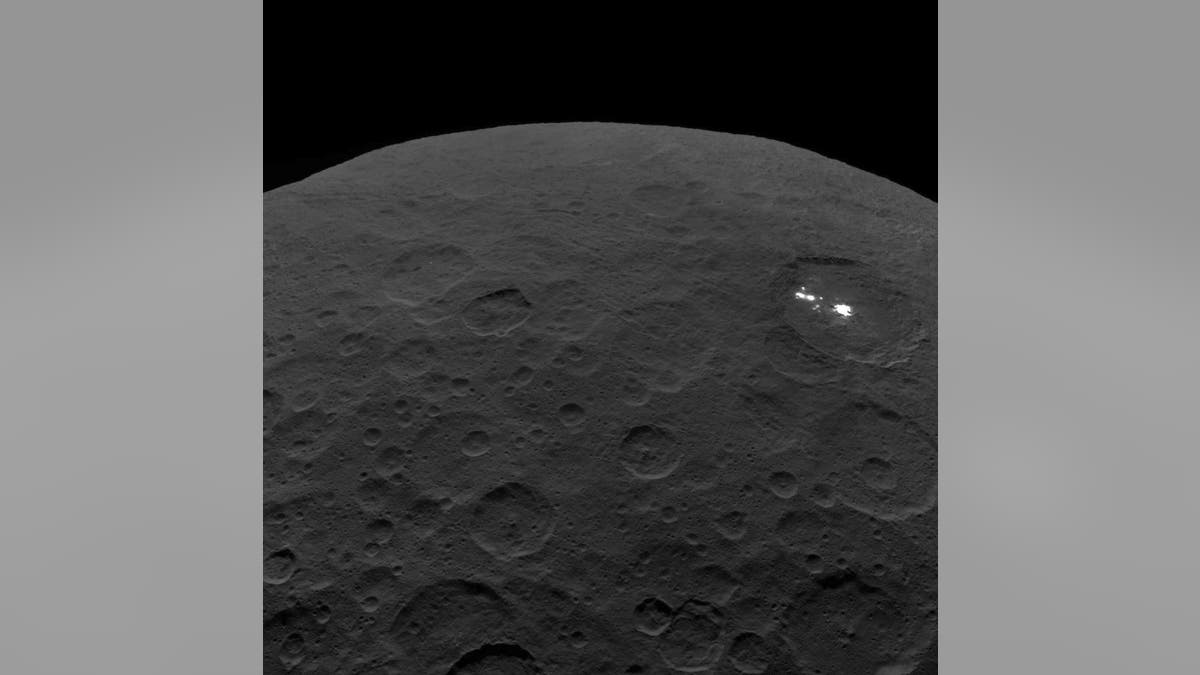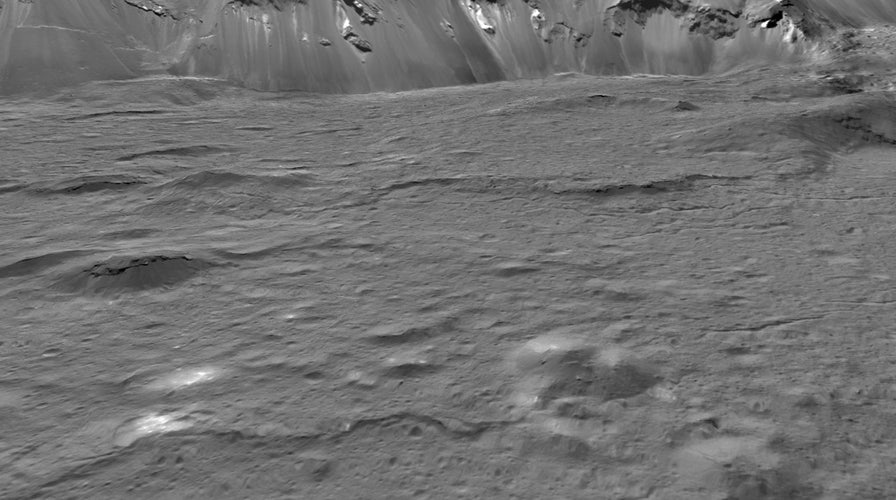Fox News Flash top headlines for August 11
Fox News Flash top headlines are here. Check out what's clicking on Foxnews.com.
Researchers have discovered that the dwarf planet Ceres has an "ancient ocean" with salt water, which means the space object may still be geologically active.
Using data from NASA'S Dawn spacecraft, seven research papers were published on Monday in the scientific journals Nature Communications, Nature Geoscience and Nature Astronomy that look at Ceres' Occator Crater, which is where scientists believe an ocean of brine, or "salt-enriched water," exists. By analyzing Ceres' gravity, the experts were able to determine the brine reservoir is approximately 25 miles below the surface and hundreds of miles wide.
"Dawn accomplished far more than we hoped when it embarked on its extraordinary extraterrestrial expedition," said Mission Director Marc Rayman of NASA's Jet Propulsion Laboratory in a statement. "These exciting new discoveries from the end of its long and productive mission are a wonderful tribute to this remarkable interplanetary explorer."

This mosaic of Ceres' Occator Crater is composed of images NASA's Dawn mission captured on its second extended mission in 2018. Bright pits and mounds (foreground) were formed by salty liquid released as Occator's water-rich floor froze after the crater-forming impact about 20 million years ago. (NASA/JPL-Caltech/UCLA/MPS/DLR/IDA/USRA/LPI)
NASA REVEALS NEW IMAGE OF DWARF PLANET 'LIKE NOTHING THAT HUMANITY HAS EVER SEEN BEFORE'
Dawn arrived at Ceres in 2015 and the last contact with the craft was in October 2018.
The Occator Crater, a strange place with bright white spots that are salt deposits, has long been a source of interest for NASA. Rayman himself mentioned it in a 2018 blog post. "Studying this one crater and the area around it (together known as a geological unit) could reveal more about the complex geology there," he wrote at the time.
It's believed the crater is about 22 million years old, but the ice volcanoes that surround it could be anywhere from billions of years old. The salt deposits could be as young as 2 million years old, according to one of the recently published studies.

This mosaic of Ceres' Occator Crater is composed of images NASA's Dawn mission captured on its second extended mission, in 2018. Bright pits and mounds (foreground) were formed by salty liquid released as Occator's water-rich floor froze after the crater-forming impact about 20 million years ago. (NASA/JPL-Caltech/UCLA/MPS/DLR/IDA/USRA/LPI)
“The 57-mile diameter Occator Crater turned out to be the ‘star’ in terms of geologically recent activity on dwarf planet Ceres,” planetary scientist David Williams of Arizona State University's School of Earth and Space Exploration said in a separate statement. “The bright materials observed in this 22-million-year-old impact crater appear to have erupted in the last 2 to 9 million years, indicating there is some internal heat still left in Ceres.”
Further research is needed to determine their exact age.
“All of the results suggest one or more brine reservoirs within the crust of Ceres, perhaps relics of an ancient ocean on this icy world,” added Williams, who is part of a team developing a concept for NASA to return to Ceres. “If it comes to fruition, a sample return mission would allow us to bring some of these bright materials to Earth to conclusively determine their origin.”
MASSIVE ICE VOLCANOES ONCE COVERED DWARF PLANET CERES EONS AGO
In addition to being a dwarf planet, Ceres is also the largest known asteroid, with a diameter approaching 600 miles. It also contains the largest mountain on the largest known asteroid in the solar system, Ahuna Mons, which rises more than 13,000 feet. It's unclear exactly what caused the formation of Ahuna Mons, with its slopes decorated by vertical streaks, but NASA has a new theory.

One of the last images of Ceres from NASA's Dawn spacecraft shows bright spots in Occator Crater. Dawn captured this view on Sept. 1, 2018, from an altitude of 2,340 miles (3,370 kilometers) above the dwarf planet's surface. (NASA/JPL-Caltech/UCLA/MPS/DLR/IDA)
"The new hypothesis, based on numerous gravity measurements, holds that a bubble of mud rose from deep within the dwarf planet and pushed through the icy surface at a weak point rich in reflective salt — and then froze," the space agency said in a 2019 statement.
By comparison, the largest mountain on Earth, Mount Everest, rises 29,029 feet.
Ceres is the largest object in the asteroid belt between Mars and Jupiter and was first spotted by Giuseppe Piazzi in 1801.
In 2017, Dawn found the building blocks for life on the dwarf planet, spotting organic molecules that appeared to form on Ceres and not from an asteroid or comet strike.

